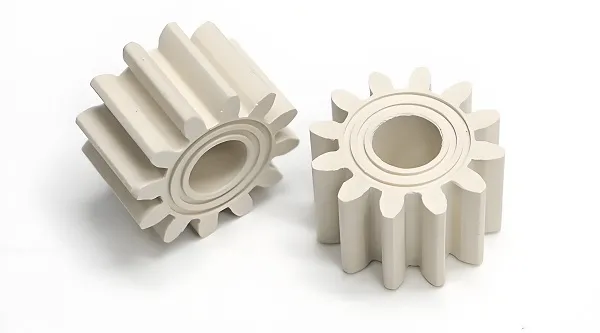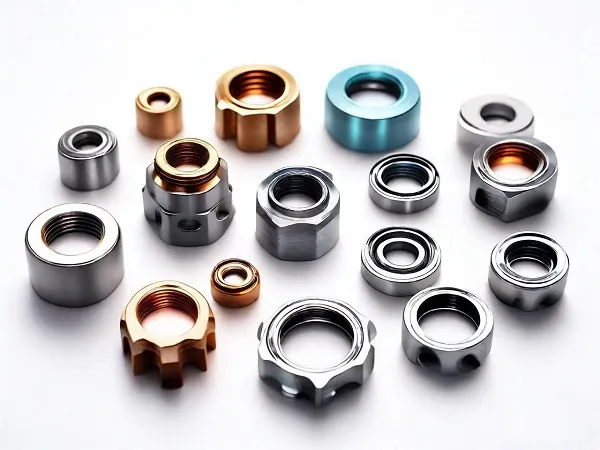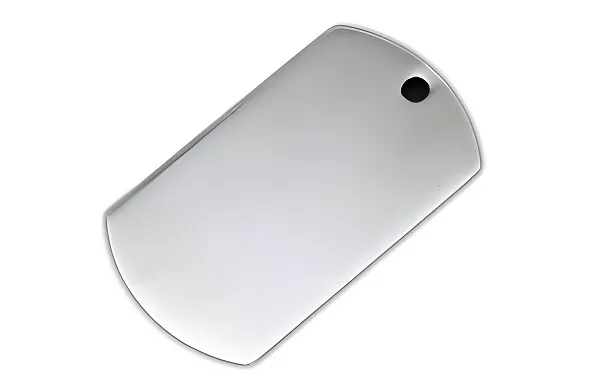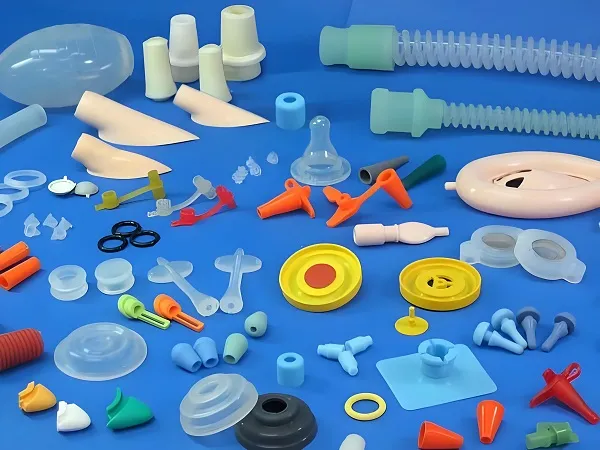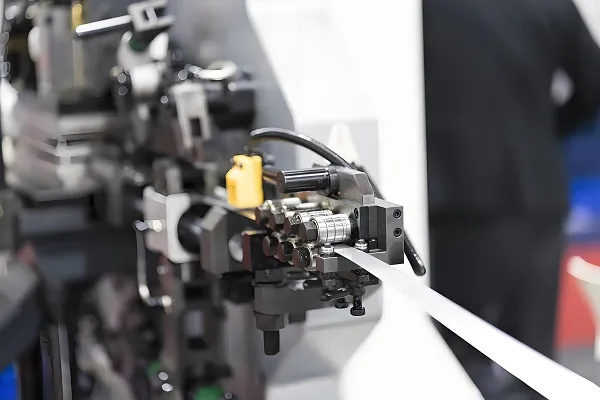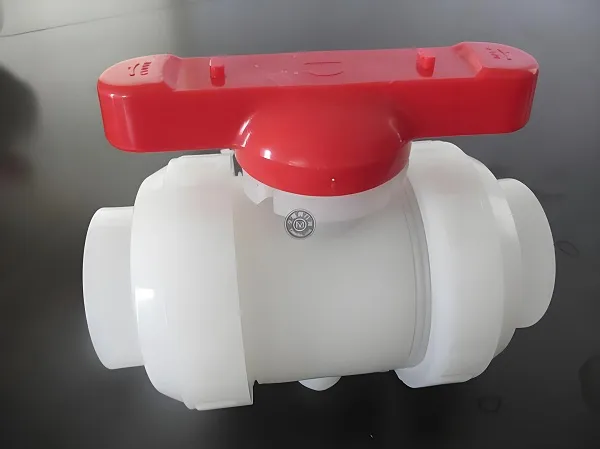Imagine, in today’s era of rapid technological development, how does every precision instrument and every delicate part around us transform from a common material into a perfect finished product? The answer is CNC machining customization. This amazing technology is like a highly skilled artisan, using precise operations and unlimited creativity to turn our ideas into reality. Today, let’s step into the wonderful world of CNC machining customization and unveil its mysterious veil.
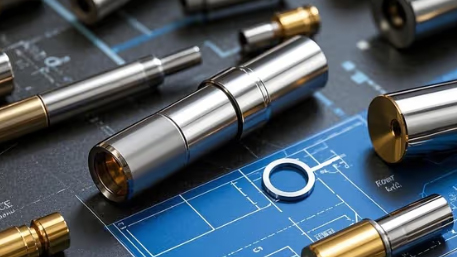
I. What is CNC
CNC, namely Computer Numerical Control, simply speaking, it is a technology that uses computer programs to control the movement of machine tools and the machining process. In traditional machining methods, workers need to operate machine tools manually, which is not only inefficient but also difficult to guarantee machining accuracy. The emergence of CNC technology has completely changed this situation. Through pre-written programs, machine tools can perform automatic machining according to precise instructions, greatly improving production efficiency and machining accuracy.
For example, in the manufacturing process of mobile phones, the shape and size requirements of mobile phone shells are very precise. Using CNC machining technology, the design drawings can be converted into computer programs, and then the materials can be precisely cut and polished by CNC machine tools to finally manufacture mobile phone shells that meet the requirements. This precise machining method makes the appearance of mobile phones more exquisite and the performance more stable.
The development history of CNC technology is also very long. As early as the 1950s, the Massachusetts Institute of Technology in the United States developed the world’s first CNC machine tool. After decades of development, CNC technology has been constantly innovated and improved, and is now widely used in various fields such as aerospace, automotive manufacturing, and electronic equipment.
II. Introduction to CNC Machining Customization
CNC machining customization refers to the personalized machining of parts using CNC technology according to the specific needs of customers. Different from traditional mass production, CNC machining customization can meet customers’ special requirements for product shape, size, material, etc., and provide customers with unique products.
Machining Process
The process of CNC machining customization generally includes the following steps:
Demand Communication: Customers communicate with the machining manufacturer to clarify the design requirements, usage scenarios, quantity, and other information of the product.
Design and Programming: According to the customer’s needs, engineers use professional design software for product design and convert the design drawings into program codes that can be recognized by CNC machine tools.
Material Selection: Select the appropriate machining material according to the usage requirements and performance characteristics of the product.
Machining and Manufacturing: Input the written program into the CNC machine tool, and the machine tool performs machining operations such as cutting, drilling, and milling on the material according to the program instructions.
Quality Inspection: After the machining is completed, strict quality inspections are carried out on the products to ensure that they meet the customer’s requirements.
Surface Treatment: According to the customer’s needs, perform surface treatment on the product, such as painting, electroplating, anodic oxidation, etc., to improve the appearance quality and corrosion resistance of the product.
Packaging and Shipping: Package the qualified products and ship them to customers in a timely manner.
Customization Advantages
CNC machining customization has the following several significant advantages:
High Precision: CNC machine tools can achieve micron-level machining accuracy and can meet the machining requirements of various high-precision parts.
High Efficiency: Through automated machining, CNC machine tools can complete a large number of machining tasks in a short time, greatly improving production efficiency.
Flexibility: It can quickly adjust the machining process and program according to different customer needs to achieve personalized custom production.
Stable Quality: Due to the use of computer control, the CNC machining process has a high degree of stability and repeatability, which can ensure the consistency of product quality.
Cost Reduction: For small-batch and multi-variety production needs, CNC machining customization can avoid high upfront costs such as mold opening and reduce production costs.
III. Introduction to CNC Machining Materials
CNC machining can use a variety of materials. Different materials have different properties and characteristics and are suitable for different application scenarios. The following are some common CNC machining materials:
Metal Materials
Aluminum Alloy: Aluminum alloy is a commonly used CNC machining material, with advantages such as low density, high strength, and corrosion resistance. It is widely used in aerospace, automotive manufacturing, electronic equipment, and other fields. For example, the iPhone mobile phone shell of Apple uses aluminum alloy material. After CNC machining, the appearance is exquisite and the texture is full.
Stainless Steel: Stainless steel has good corrosion resistance and strength and is often used in the manufacture of medical devices, food processing equipment, architectural decoration, and other products. During the CNC machining process, the cutting of stainless steel materials is more difficult, and appropriate cutting tools and machining parameters need to be used.
Copper Alloy: Copper alloy has good electrical conductivity and thermal conductivity and is often used in the manufacture of electronic components, electrical equipment, and other products. Common copper alloys include brass and bronze.
Plastic Materials
ABS Plastic: ABS plastic is a commonly used engineering plastic with high strength, good toughness, and easy processing. It is widely used in the manufacture of automotive interiors, home appliance shells, toys, and other products.
PC Plastic: PC plastic has high transparency, high strength, and impact resistance and is often used in the manufacture of optical lenses, electronic displays, safety helmets, and other products.
POM Plastic: POM plastic has high hardness, high wear resistance, and good self-lubrication and is often used in the manufacture of mechanical parts, gears, bearings, and other products.
Other Materials
Wood: Wood is a natural material with good texture and decorative properties. In CNC machining, wood can be used to manufacture furniture, handicrafts, and other products.
Ceramics: Ceramic materials have high hardness, high wear resistance, and high-temperature resistance and are often used in the manufacture of cutting tools, molds, electronic components, and other products. However, the processing of ceramic materials is more difficult and requires the use of special processing techniques and equipment.
IV. Professional Introduction to CNC Machining Technology
Machining Process
CNC machining processes mainly include cutting machining, grinding machining, electrical discharge machining, etc. Among them, cutting machining is the most commonly used machining process, including turning, milling, drilling, boring, etc.
Turning: Turning is a method of cutting machining on a rotating workpiece using a lathe. It is mainly used for machining rotating parts such as shafts and discs.
Milling: Milling is a method of cutting machining on a workpiece using a milling cutter. It can machine various shapes of parts such as planes, grooves, and curved surfaces.
Drilling: Drilling is a method of machining holes on a workpiece using a drill bit. It is often used to machine installation holes, positioning holes, etc. of various parts.
Boring: Boring is a method of expanding and finish machining existing holes on a workpiece using a boring cutter. It can improve the dimensional accuracy and surface quality of the holes.
Tool Selection
Tools are very important tools in CNC machining, and the selection of tools directly affects the machining quality and efficiency. When selecting tools, the following factors need to be considered:
Workpiece Material: Different workpiece materials require the use of different tool materials. For example, high-speed steel tools or carbide tools can be used for machining aluminum alloy materials; more wear-resistant tool materials such as ceramic tools and cubic boron nitride tools are required for machining stainless steel materials.
Machining Process: Different machining processes require the use of different types of tools. For example, turning tools are required for turning machining; milling cutters are required for milling machining; drill bits are required for drilling machining.
Machining Accuracy: The higher the machining accuracy requirements, the higher the accuracy of the tools required. For example, for high-precision part machining, coated tools or super-hard tools are required.
Tool Life: Tool life refers to the number of workpieces that a tool can machine under normal use. In order to improve production efficiency and reduce costs, tools with a long tool life need to be selected.
Programming Technology
CNC programming refers to the process of converting the design drawings of the product into program codes that can be recognized by CNC machine tools. CNC programming technology mainly includes manual programming and automatic programming.
Manual Programming: Manual programming refers to the programming personnel manually writing program codes using programming languages (such as G codes, M codes, etc.) according to the design drawings and machining process requirements of the product. Manual programming is suitable for simple part machining, and the programming efficiency is low, but it can improve the programming ability of the programming personnel and the understanding of the machining process.
Automatic Programming: Automatic programming refers to the use of professional programming software (such as Mastercam, UG, Pro/E, etc.), through computer-aided design (CAD) and computer-aided manufacturing (CAM) technology, to automatically generate program codes that can be recognized by CNC machine tools. Automatic programming is suitable for complex part machining, and the programming efficiency is high, but it requires the programming personnel to master certain software operation skills.
V. CNC Customized Marketing Content
Service Advantages
Our CNC machining customization service has the following several advantages:
Professional Team: We have a professional team of engineers and technical workers with rich CNC machining experience and professional knowledge. We can provide customers with all-round technical support and solutions.
Advanced Equipment: We have introduced multiple advanced CNC machining equipment, including high-speed machining centers, CNC lathes, CNC grinders, etc. These equipment have the advantages of high precision, high efficiency, and good stability, which can guarantee the machining quality and production efficiency of products.
Quality Assurance: We have established a perfect quality management system, and strict quality control is carried out in all links from raw material procurement to product machining, inspection, packaging, and shipping. Ensure that each product meets the customer’s requirements and relevant standards.
Quick Response: We promise to respond quickly after receiving the customer’s order and arrange production in a timely manner. And deliver the products to customers in the shortest time.
Personalized Service: We can provide personalized CNC machining customization services according to different customer needs. Whether it is simple part machining or complex product development, we can meet customer needs.
Success Cases
We have provided high-quality CNC machining customization services for many customers. The following are some of our success cases:
Aerospace Field: We machined a batch of high-precision aerospace parts for an aerospace enterprise. The dimensional accuracy requirements of these parts reached the micron level. Through our professional machining and strict inspection, the product quality was highly recognized by the customer.
Automotive Manufacturing Field: We customized a batch of automotive engine parts for an automotive manufacturing enterprise. The material of these parts is high-strength aluminum alloy, and the machining difficulty is relatively large. We successfully completed the machining task and improved the production efficiency by optimizing the machining process and selecting the appropriate cutting tools.
Electronic Equipment Field: We machined a batch of mobile phone shells for an electronic equipment enterprise. The appearance requirements of these mobile phone shells are very high. We adopted advanced surface treatment processes to make the appearance of the mobile phone shells more exquisite and the texture more full.
Customer Reviews
Listen to what our customers say:
”Cooperating with your company is very pleasant. Your professional team and advanced equipment provide us with high-quality CNC machining customization services. The accuracy and quality of the products meet our requirements, and the delivery time is also very punctual. We will continue to cooperate with your company.” – Head of an aerospace enterprise
”Your personalized service makes us very satisfied. The special requirements we put forward, you can respond and solve them in a timely manner. The quality and appearance of the products exceed our expectations. Thank you for your hard work!” – Head of an electronic equipment enterprise
VI. Introduction to the Precision of CNC Machining
The precision of CNC machining is one of the important indicators to measure its machining quality. Precision mainly includes dimensional accuracy, shape accuracy, and positional accuracy.
Dimensional Accuracy
Dimensional accuracy refers to the degree of conformity between the actual size of the machined part and the designed size. CNC machining can achieve very high dimensional accuracy, generally reaching ±0.01mm or even higher. For example, in the manufacture of watch parts, the dimensional accuracy requirements are very high, and CNC machining can meet this high-precision machining requirement.
Shape Accuracy
Shape accuracy refers to the degree of conformity between the actual shape of the machined part and the designed shape. Common shape accuracies include straightness, flatness, roundness, cylindricity, etc. CNC machining can ensure the shape accuracy of parts by precise tool path control and machining process optimization.
Positional Accuracy
Positional accuracy refers to the degree of conformity between the relative positions of each surface of the machined part and the design requirements. Common positional accuracies include parallelism, perpendicularity, coaxiality, etc. In CNC machining, precise fixture design and positioning systems can ensure the positional accuracy of parts.
In order to ensure the precision of CNC machining, it needs to be controlled from multiple aspects. For example, select high-precision machine tool equipment, optimize machining process parameters, use high-quality cutting tools and fixtures, and carry out strict quality inspections.
VII. CNC Machining Customization Related Questions and Answers
How is the price of CNC machining customization determined?
The price of CNC machining customization mainly depends on the following factors:
Material Cost: Different materials have large price differences, and the quality and specifications of materials also affect the price.
Machining Difficulty: Machining difficulty factors such as the shape, size, and accuracy requirements of the part will affect the machining time and cost.
Batch Size: The larger the batch size, the lower the unit cost; the smaller the batch size, the higher the unit cost.
Surface Treatment: Different surface treatment processes have different prices, such as painting, electroplating, anodic oxidation, etc.
How long is the cycle of CNC machining customization generally?
The cycle of CNC machining customization depends on multiple factors, such as the complexity of the part, batch size, utilization rate of equipment, etc. Generally speaking, the machining cycle of simple parts may be about a few days to a week; the machining cycle of complex parts may take several weeks or even longer. We will evaluate the machining cycle according to the specific situation after receiving the customer’s order and communicate with the customer in a timely manner.
Can CNC machining customization guarantee the quality of the product?
We attach great importance to the quality of the product. Through the establishment of a perfect quality management system, strict quality control is carried out in all links from raw material procurement to product machining, inspection, packaging, and shipping. We have professional inspection equipment and inspection personnel to conduct strict inspections on each product to ensure that the product meets the customer’s requirements and relevant standards. At the same time, we also provide after-sales service. If the customer finds product quality problems during use, we will solve them in a timely manner.
How to cooperate with you for CNC machining customization?
You can cooperate with us in the following ways:
Telephone Consultation: You can call our consultation phone number and communicate with our customer service staff to learn about our services and product information.
Online Message: You can leave a message on our official website, leaving your contact information and demand information, and we will contact you in time.
Field Visit: You can visit our factory for a field visit to learn about our production equipment, machining processes, and quality management system.
When communicating and cooperating with us, please provide detailed product design drawings and related technical requirements as much as possible so that we can accurately assess the machining cost and cycle and provide you with better services.

